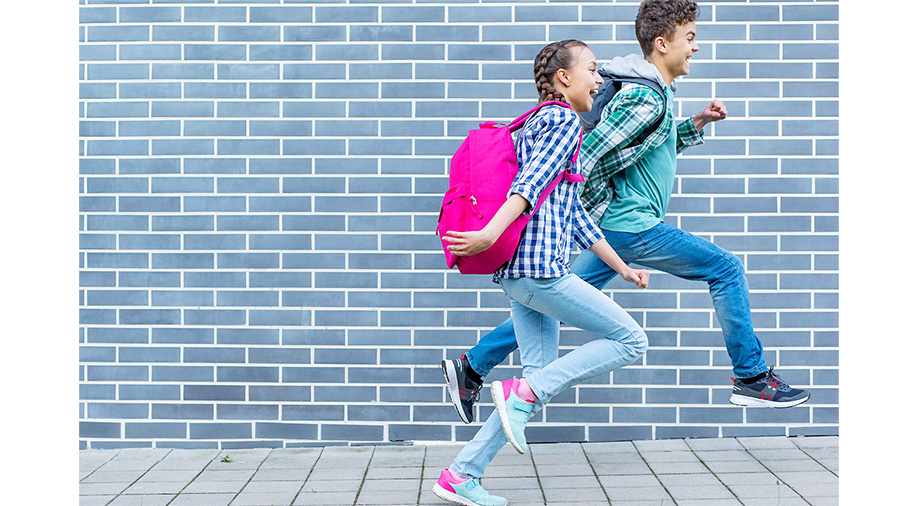Deloitte’s 2021 Back-to-School Survey*, found that back-to-school spending at Kindergarten through 12th grade (K-12) will grow 16 percent this year, reaching its highest level in recent years as clarity surrounding the upcoming school year and consumer sentiment rise.
Deloitte joins a chorus of others forecasting a strong rebound in back-to-school selling. In a separate survey, Deloitte found a more modest recovery for back-to-college spending, up 5 percent.
The overall outlook heading into the fall is bright, with 55 percent of K-12 parents and 46 percent of college parents more confident about the economy (up from 17 percent and 14 percent respectively, in 2020), and household financial situations holding steady with 78 percent of K-12 parents and 75 percent of college parents in similar or better shape than in 2020;
“As Americans anticipate a more traditional return to the back-to-school season, the good news is that parents are ready to spend more and earlier to ensure their children have what they need to be successful,” said Rod Sides, vice chairman, Deloitte LLP, and U.S. retail, wholesale and distribution leader. “This includes increased spending on technology for K-12 and college students, demonstrating a shifting focus on how students learn and how parents are shopping for these necessities.”
Tech Expected To Pace Category Gains
Back-to-school spending at the K-12 level is expected to reach a collective $32.5 billion, or approximately $612 per student. That compares to 2020 figures of $28.1 billion, or $529 per student.
Overall spending will increase across categories, with 40 percent of K-12 households planning to spend more on back-to-school items (up from 22 percent in 2020), including clothing, supplies, computers, and electronics. The majority of these parents cite their children’s need for more items this year as a reason for the increased spending.
Spending on technology products (personal computers, smartphones, tablets, wearables, etc.) will increase 37 percent over 2020 to $11.8 billion as parents adjust to the realities of a more digitally oriented education. Wearable technology will also see the most significant gain.
Clothing and accessories remain the largest category but are expected to be about flat at $12.3 billion against $12.4 million.

Kate Ferrara, senior leader, Deloitte’s Risk & Financial Advisory Practice, shown right, said, “Even if students are fully in the classroom, a lot of them are used to a more digital learning experience. That was one of the biggest changes that we saw this year in the survey, how much digital learning has propelled the technology spending this year.”
Because their children are using more digital technologies in and out of the classroom, 44 percent of households plan to purchase fewer traditional back-to-school supplies. However, 58 percent will spend the same or more on online learning resources such as e-learning platform subscriptions, online courses, educational tool licenses, and online tutors to supplement classroom learning.
Digital Preferences Accelerate Online Shopping
Technology isn’t just impacting what parents buy for back-to-school; it’s driving how they complete transactions. The level of online spending for back-to-school remains high (39 percent compared to 37 percent in 2020), while in-store spending is flat at 43 percent, demonstrating a fundamental shift in consumer shopping patterns.
Overall, the survey found K-12 families plan to spend $12.5 billion online this back-to-school season, up from $10.4 billion last year.
Other findings for online shopping behavior:
- The majority of consumers plan to use personal computers (67 percent) or smartphones (58 percent) to shop, up from 64 percent and 46 percent in 2020, respectively;
- Social media is an integral part of shopping for 41 percent of K-12 parents, up 25 percent from 2020. Among those using social media, 42 percent are visiting retailers’ social media pages to assess their products and get a sense of their personality and purpose, compared to 30 percent in 2020; and
- 44 percent of K-12 parents plan to leverage tech-enabled shopping tools offered by retailers for their back-to-school purchases. Shopping using a voice assistant is the most preferred offering (20 percent), followed by digital wallets (17 percent) and “buy” buttons on social media, virtual reality and chatbots (each at 15 percent).
Online-Only Stores Preferred Back-To-School Shopping Destination
Although mass merchants remain the most popular retail format to visit (74 percent), online-only stores are the preferred format for tech purchases. Overall, more people expect to shop at online retailers (49 percent) and closer to home at dollar stores (41 percent) compared to last year.
Fast-fashion and thrift store visits are also rising as interest in athleisure (61 percent) and fashion clothing (57 percent) elevated among higher-income households.
When selecting where to shop, K-12 parents continue to seek a good deal for their purchases (51 percent), but they also expect improved product quality (48 percent versus 43 percent in 2020). Consumers also expect the conveniences they adopted during the pandemic to remain available, with 34 percent plan to use BOPIS or curbside pickup more frequently for back-to-school shopping.
K-12 parents are expected to make their back-to-school purchases earlier than usual after a year of supply chain challenges. Half the K-12 parents surveyed are concerned about stockouts, especially for tech items. The survey shows that 59 percent of back-to-school spending will occur by the end of July (versus 45 percent in 2020).
Parents of college-age kids are planning to spend more,too, driven by confidence in returning to campus. Parents were less anxious about their kids returning to campus (34 percent versus 62 percent in 2020), and more than three-quarters of parents (78 percent) expected their college-age kids to be vaccinated by September 2021.
Back-To-College Expected To Expand 5 Percent
Back-to-college parents plan to spend $26.7 billion, or $1,459 per student, up 5 percent from last year. Of the spend, $9.4 million, or 35 percent, is expected to occur online.
Among categories, clothing and accessories spending is expected to climb 12 percent to $3.8 billion. The biggest gain comes from electronics and digital subscriptions, up 42 percent. Other gaining categories include computers and hardware, up 6 percent; household appliances and supplies, 9 percent and dorm apartment furniture and equipment, 2 percent. College supplies are expected to see a decline of 9 percent.
More than one-third (34 percent) of college families expect to spend more on college-related items this year. Middle-income family’s spending is forecasted to rebound and surpass pre-pandemic levels. Further, the estimated spend is more than that of higher-income families in computer hardware, while dorm and apartment furniture and electronics also see renewed investments.
The most important considerations for back-to-college shopping were competitive pricing, cited by 66 percent; followed by free shipping, 55 percent; sales or price discounts, 54 percent; product quality, 50 percent; and carries items on my college shopping list, 46 percent.
Despite the preference for online shopping for back-to-college purchases, the overall use of tech shopping tools, including digital wallets and voice assistants, is lower for back-to-college shoppers (30 percent) than for back-to-school consumers (44 percent).
Similarly, the back-to-college consumer is half as likely to use social media to assist with shopping than those purchasing items for back-to-school (22 percent versus 41 percent).
*The 2021 Deloitte Back-to-School Survey polled 1,200 parents who have at least one child attending school in grades K-12 this fall between May 27 to June 5. The Survey polled 961 parents of children heading to colleges and universities this fall between May 28. To read KPMG’s back-to-school survey, go here. Mastercard’s back-to-school survey can be found here.
Photos courtesy Deloitte/Kate Ferrara, Adobe
















